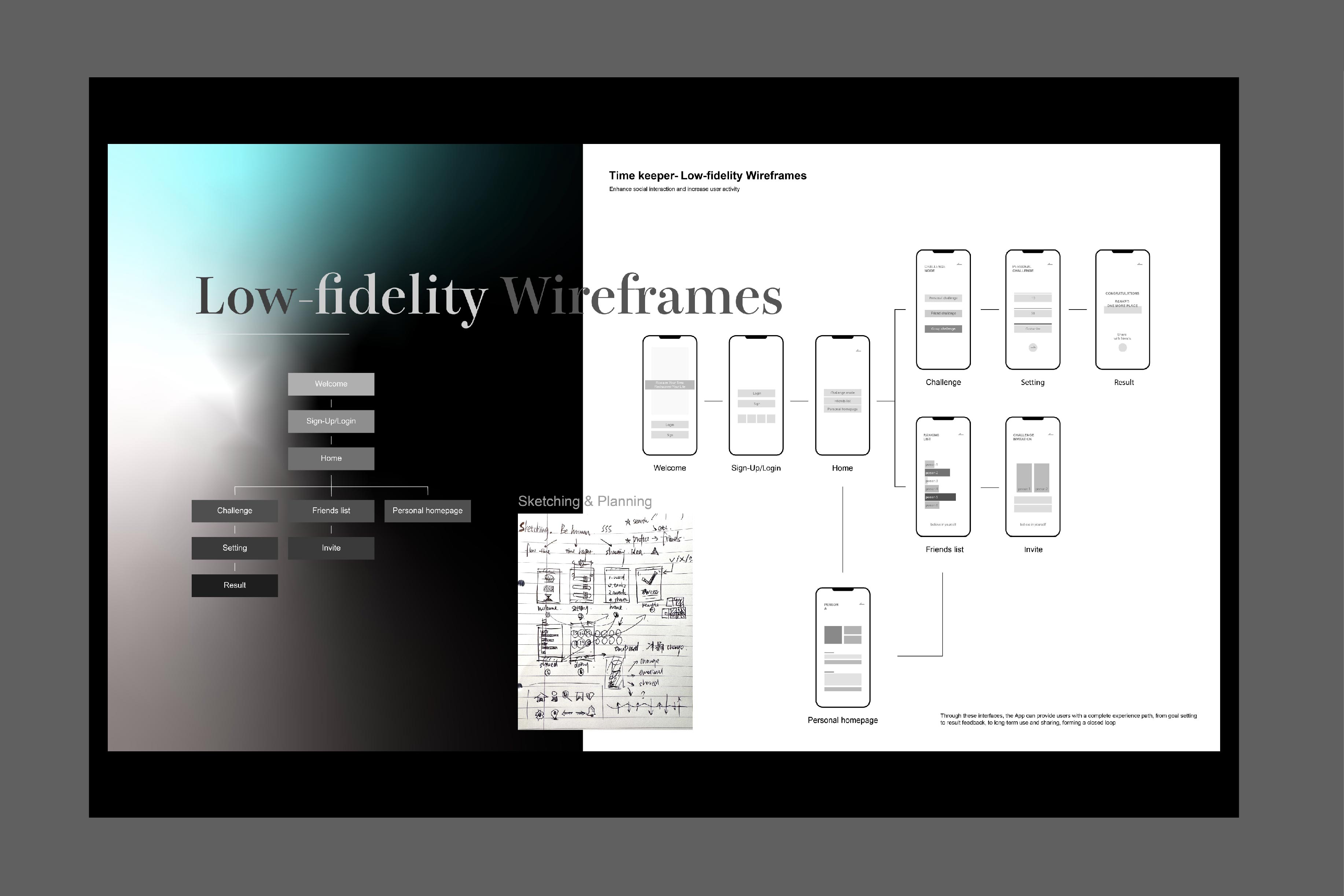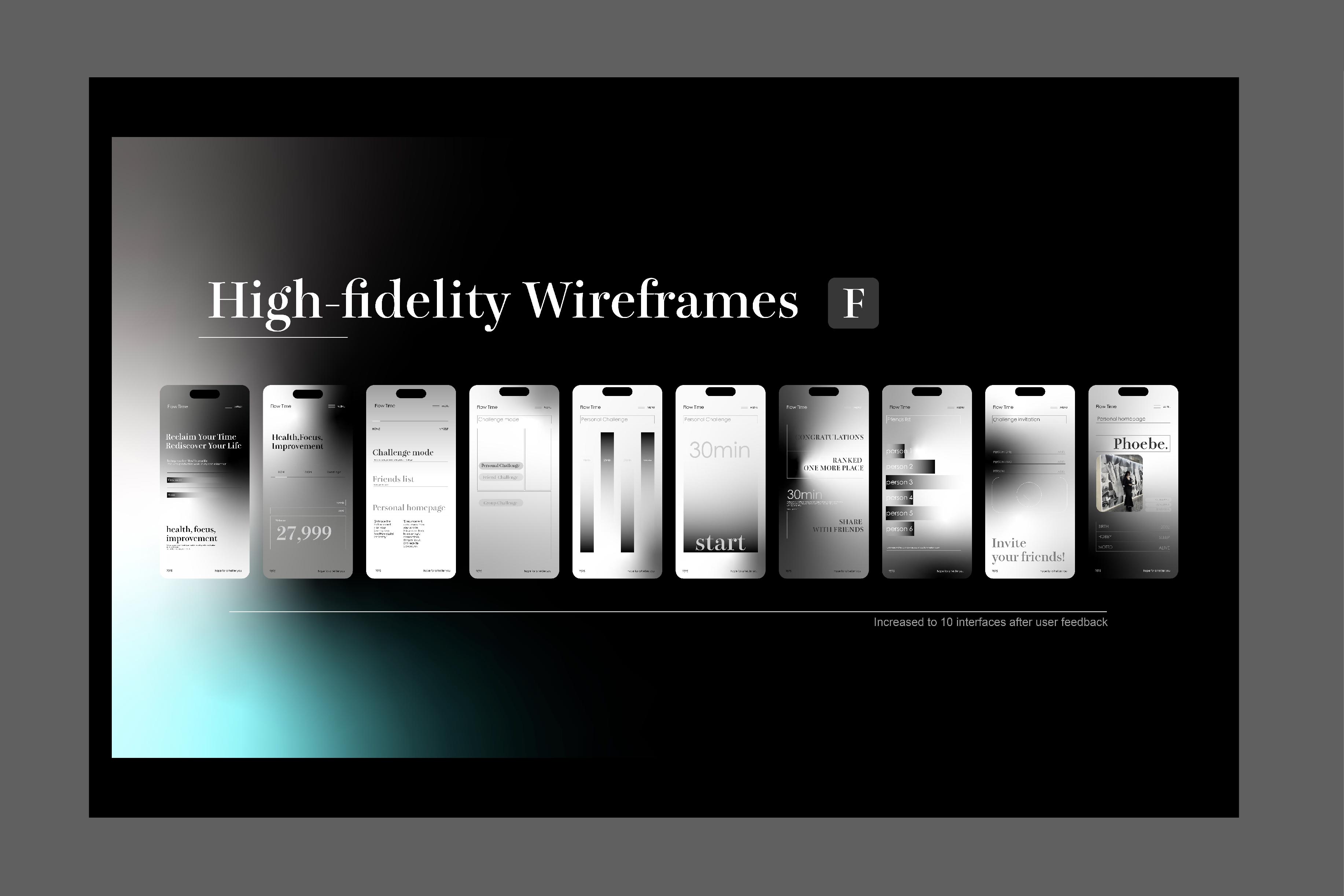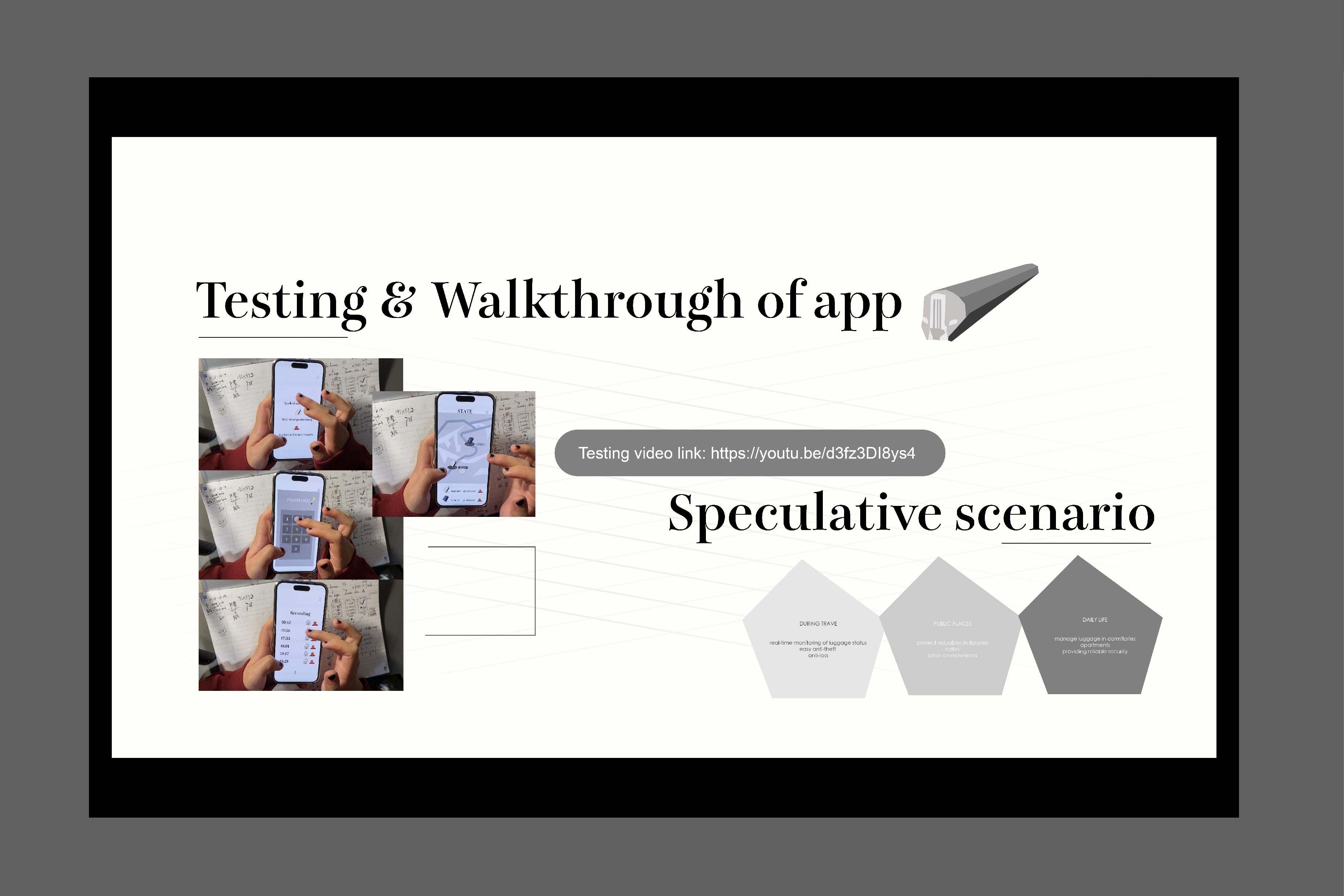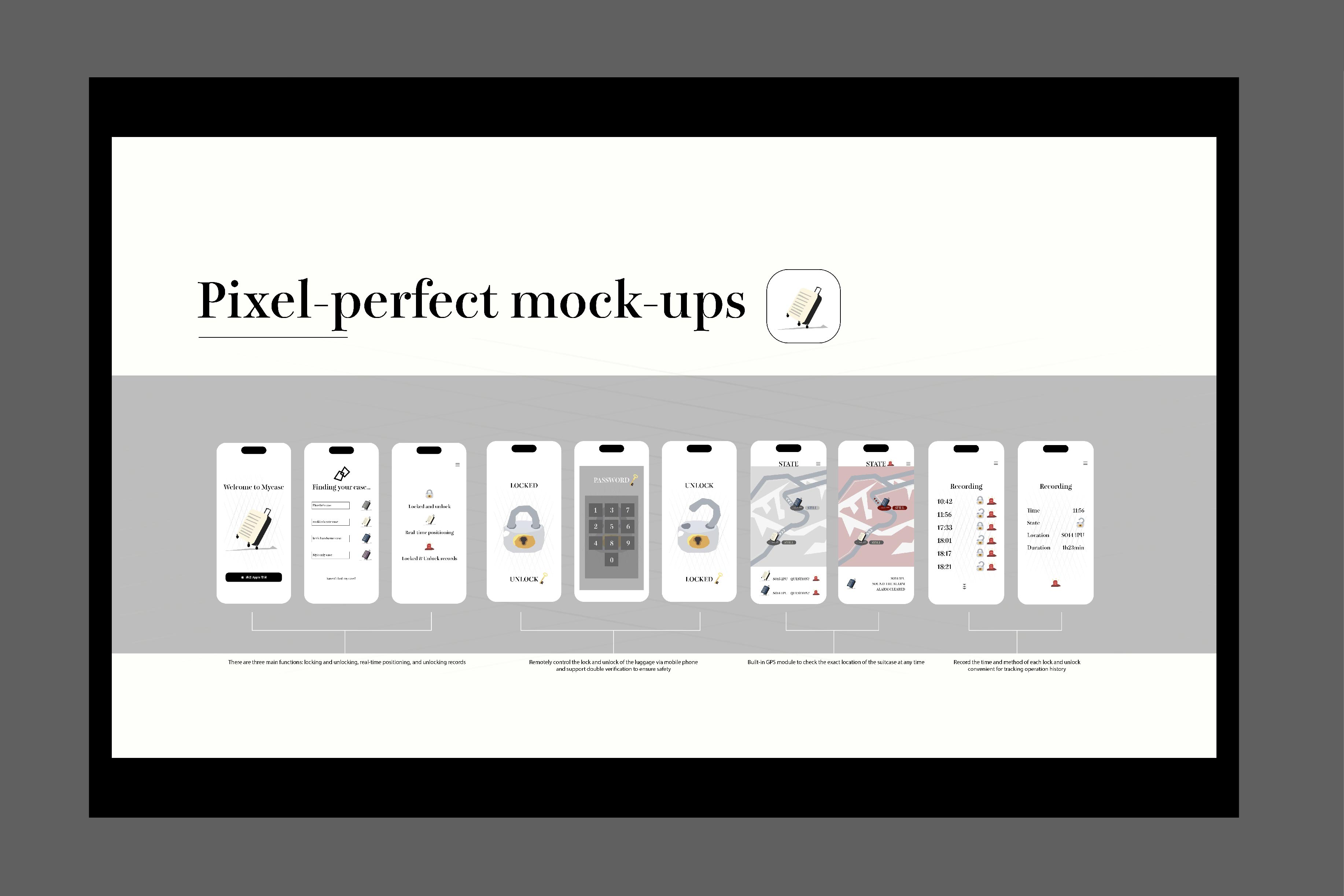

Final report
—Project 2 “Being human” report
The most significant insight in project two is that through extensive research, I found that
teenagers and young people (13-21 years old) generally have the problem of excessive use of
mobile phones, especially spending a lot of time on entertainment and social applications.
Based on this phenomenon, I designed the "Be Human" app to help users reduce unnecessary
screen time and guide them to focus on more meaningful activities. The app helps users
realize unhealthy usage habits through functional design, such as screen time tracking and
partition reminders. This can not only avoid distraction caused by long-term addiction to
entertainment or social applications but also improve users' life efficiency and
self-management ability.
A possible implication of this new idea is that "Be Human" app encourages users to participate with friends by setting up a "no-phone challenge" combined with leaderboards and community features. The goal of this design is to use competition and community support to help users more actively reduce unnecessary screen time while cultivating healthy living habits. In the actual design, I realized that there is a challenge between keeping the interface simple and rich in functions. On the one hand, the leaderboard and community functions need to provide enough interactivity to attract users; on the other hand, too many options and complex interfaces may make users feel overwhelmed and reduce their willingness to use. This shows that in future feature iterations, it is necessary to more carefully balance the depth of feature design with the intuitiveness of the user experience to achieve higher user acceptance and satisfaction.
A possible implication of this new idea is that "Be Human" app encourages users to participate with friends by setting up a "no-phone challenge" combined with leaderboards and community features. The goal of this design is to use competition and community support to help users more actively reduce unnecessary screen time while cultivating healthy living habits. In the actual design, I realized that there is a challenge between keeping the interface simple and rich in functions. On the one hand, the leaderboard and community functions need to provide enough interactivity to attract users; on the other hand, too many options and complex interfaces may make users feel overwhelmed and reduce their willingness to use. This shows that in future feature iterations, it is necessary to more carefully balance the depth of feature design with the intuitiveness of the user experience to achieve higher user acceptance and satisfaction.

Final report
—Project 2 “Being human” report
This understanding is important in a number of ways. First it learned how to more fully
understand user behavior and needs through user journey map analysis. This enabled me to
better design and optimize features, such as enhancing visual feedback and adding social
competition elements, which significantly improved user experience and satisfaction.
Especially in the design of leaderboards and community functions, user feedback shows that
this combination not only motivates user participation but also increases their sense of
belonging in the challenge. In addition, the app provides a complete experience path from
goal setting to result feedback, long-term use and social sharing, forming a closed loop.
This design logic allows users to feel a sense of accomplishment while completing challenges
and further strengthens the positive cycle of behavior by sharing with friends. The sharing
function has been well received by test users for its intuitive operation and outstanding
visual effects. This function successfully links users' screen usage habits with emotional
expression, increasing the fun and interactivity of the app. Despite this, some users have
reported that they hope to be able to switch between functions more smoothly, which provides
a clear direction for future optimization.
This insight will be useful in this course, in my future career, and in my life. In this course, could realize that I need to pay more attention to the intuitiveness of the user experience and the guidance of functions in future designs. First, I will simplify the interface design to ensure that users can easily get started when they use it for the first time. This includes optimizing the navigation structure, reducing unnecessary functional levels, and guiding users to quickly understand the core functions through intuitive icons and clear copywriting. Secondly, I plan to enhance the emotional diary function, adding guiding prompts and customizable templates on the existing basis to help users more conveniently record and reflect on their emotional state. At the same time, this will further enhance the personalized experience of the app and make users feel that the function is tailored to their personal needs. In the design process, I will prioritize iterative testing, especially in the low-fidelity and high-fidelity prototype stages, to discover and solve usability problems as early as possible through user testing. This phased testing method can not only ensure the rationality of functional design but also avoid the waste of time and resources caused by large-scale rework in the later stage. To ensure that future versions are closer to the actual needs of users. Through these improvements, I hope that future designs can reach higher standards in both functional practicality and user satisfaction.
This insight will be useful in this course, in my future career, and in my life. In this course, could realize that I need to pay more attention to the intuitiveness of the user experience and the guidance of functions in future designs. First, I will simplify the interface design to ensure that users can easily get started when they use it for the first time. This includes optimizing the navigation structure, reducing unnecessary functional levels, and guiding users to quickly understand the core functions through intuitive icons and clear copywriting. Secondly, I plan to enhance the emotional diary function, adding guiding prompts and customizable templates on the existing basis to help users more conveniently record and reflect on their emotional state. At the same time, this will further enhance the personalized experience of the app and make users feel that the function is tailored to their personal needs. In the design process, I will prioritize iterative testing, especially in the low-fidelity and high-fidelity prototype stages, to discover and solve usability problems as early as possible through user testing. This phased testing method can not only ensure the rationality of functional design but also avoid the waste of time and resources caused by large-scale rework in the later stage. To ensure that future versions are closer to the actual needs of users. Through these improvements, I hope that future designs can reach higher standards in both functional practicality and user satisfaction.

Final report
—Project 3 “MyCase” report
One thing I understand now is that in one month, I completed the design work of the MyCase
app, which mainly included user journey design and functional prototype development,
covering user research, prototype design and feedback optimization. I conducted in-depth
research on the daily travel needs of the target group of international students, focusing
on the pain points of luggage safety management, especially the needs for location tracking
and smart locking functions. I collected detailed data to support the design process.
Through user testing, I optimized the design many times to ensure that the functions and
interface better meet the actual needs and usage habits of the target users.
This new understanding of research is likely to mean two things. It could be that the main pain points faced by international students in their daily travels are the location tracking and security of their luggage. Specifically, they are worried that their luggage may be stolen or lost during their travels, and they hope to be able to control the status of their luggage in real time. These findings directly drove the functional direction of the MyCase app, prompting me to design key features including remote phone locking, GPS real-time positioning, and abnormal alarms to effectively solve these problems. During the design process, I verified the functional concepts through low-fidelity prototypes and used high-fidelity prototypes to further simulate real-life usage scenarios. Later, through user testing and feedback collection, I found that some functions needed to be optimized, such as a more intuitive unlocking interface and more accurate positioning prompts. Based on this feedback, I adjusted the functions to ensure that the design can better meet user needs and improve the ease of use and practicality of the overall experience.
This new understanding of research is likely to mean two things. It could be that the main pain points faced by international students in their daily travels are the location tracking and security of their luggage. Specifically, they are worried that their luggage may be stolen or lost during their travels, and they hope to be able to control the status of their luggage in real time. These findings directly drove the functional direction of the MyCase app, prompting me to design key features including remote phone locking, GPS real-time positioning, and abnormal alarms to effectively solve these problems. During the design process, I verified the functional concepts through low-fidelity prototypes and used high-fidelity prototypes to further simulate real-life usage scenarios. Later, through user testing and feedback collection, I found that some functions needed to be optimized, such as a more intuitive unlocking interface and more accurate positioning prompts. Based on this feedback, I adjusted the functions to ensure that the design can better meet user needs and improve the ease of use and practicality of the overall experience.

Final report
—Project 3 “MyCase” report
Having realized that in this project, I develop a lot of practical experience and improved
my skills. First, I learned how to iterate the design quickly and was able to flexibly
adjust functions based on user feedback. For example, during the user testing process, I
found that some functions of the initial design were not intuitive enough. After iterative
optimization, the high-fidelity prototype received positive feedback from users, especially
the interface was evaluated as simple and easy to use. Secondly, I realized that it is
crucial to conduct a more detailed analysis of user survey data in the early stages of
design. By improving data analysis methods, I was able to refine user needs more accurately,
which made the designed functions more in line with actual application scenarios while
avoiding unnecessary redundant functions. In addition, this experience also made me realize
the importance of time management. Due to insufficient initial time arrangement, some
functions of the high-fidelity prototype were not completed as planned. But after adjusting
the work rhythm, I learned to allocate task priorities more efficiently and finally ensured
the realization of core functions. Overall, this project not only improved my design skills,
but also gave me a deeper understanding of project management and user-oriented thinking.
This new insight will be useful in this course, in the bachelor’s degree, in my future career as a designer, and in my life. In this course, understanding user needs analysis plays a core role in design. We must identify the specific characteristics of the target user group, understand their needs and pain points, and design features that can truly solve the problems. Therefore, in future design projects, I will give priority to detailed and extensive needs research to ensure the representativeness of the sample and the accuracy of the data, to avoid the lack of applicability of functional design due to insufficient research. In addition, I plan to try to incorporate more emotional design elements and enhance the emotional connection of the user experience through color, interactive feedback, etc., so that the design not only meets the functional requirements but also brings a pleasant experience. In terms of project time management, plan the task time and priority to ensure that the key nodes of the project are completed on time to avoid affecting the final function realization due to insufficient time. In the future, I will introduce user testing earlier and more frequently, integrate small-scale testing into different stages of design, collect user feedback in a timely manner, and quickly iterate the design. This will help me more efficiently verify the usability of functions and the matching degree of user needs and ensure that the final product can better meet user expectations. Through these improvements, I hope to further improve the design quality in the next project and achieve project goals more efficiently. ( word count:1454)
Reference: DIEP framework from The Royal Melbourne Institute of Technology (RMIT) in Australia
This new insight will be useful in this course, in the bachelor’s degree, in my future career as a designer, and in my life. In this course, understanding user needs analysis plays a core role in design. We must identify the specific characteristics of the target user group, understand their needs and pain points, and design features that can truly solve the problems. Therefore, in future design projects, I will give priority to detailed and extensive needs research to ensure the representativeness of the sample and the accuracy of the data, to avoid the lack of applicability of functional design due to insufficient research. In addition, I plan to try to incorporate more emotional design elements and enhance the emotional connection of the user experience through color, interactive feedback, etc., so that the design not only meets the functional requirements but also brings a pleasant experience. In terms of project time management, plan the task time and priority to ensure that the key nodes of the project are completed on time to avoid affecting the final function realization due to insufficient time. In the future, I will introduce user testing earlier and more frequently, integrate small-scale testing into different stages of design, collect user feedback in a timely manner, and quickly iterate the design. This will help me more efficiently verify the usability of functions and the matching degree of user needs and ensure that the final product can better meet user expectations. Through these improvements, I hope to further improve the design quality in the next project and achieve project goals more efficiently. ( word count:1454)
Reference: DIEP framework from The Royal Melbourne Institute of Technology (RMIT) in Australia
liushuyan_uk2024@163.com